The Vietnamese traditional dress, known for its elegance and cultural symbolism, is a reflection of the country’s rich heritage and identity. The most iconic of these attires is the Áo Dài, a long tunic worn over loose-fitting trousers, symbolizing grace and femininity. Originating in the 18th century, the Ao Dai has gone through numerous transformations, adapting to contemporary needs while preserving its traditional allure.
Its presence is felt in diverse aspects of Vietnamese life, from festivals and weddings to daily wear, embodying Vietnamese spirit and pride. The materials and colors of these garments are chosen with care, each telling a story and holding cultural significance. Even as Western fashions have influenced modern Vietnamese style, the Áo Dài and other traditional garments continue to represent a connection to the nation’s past and an enduring commitment to cultural heritage.
Overview of Vietnamese traditional attire
Vietnamese traditional attire, epitomized by the Áo Dài, is a testament to the nation’s long-standing history and cultural richness. Rooted in centuries of tradition, these garments reflect influences from indigenous cultures and neighboring civilizations. Each piece, whether it be the elegant Ao Dai or the practical Ao Ba Ba, serves not only as clothing but as a narrative of Vietnam’s cultural identity.
These attires have evolved alongside the country’s tumultuous history, showcasing resilience and adaptability. As Vietnam continues to navigate the modern world, traditional attire remains a vital element of cultural expression and pride, evident in the vibrantly colored fabrics and intricate designs that reflect the diversity of the Vietnamese people.
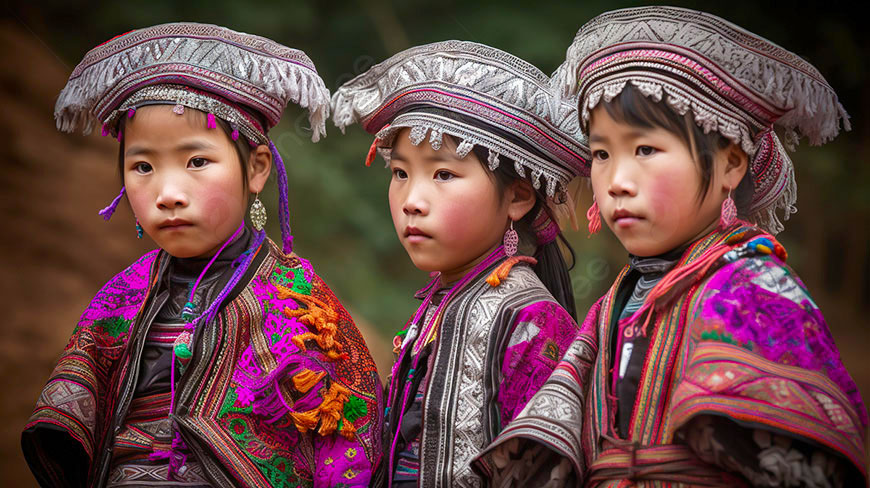
Historical background of Vietnamese traditional dress
The historical background of Vietnamese traditional dress paints a vivid picture of a country rich in cultural diversity and steeped in historical significance. Throughout centuries, these garments have mirrored the evolution of Vietnam, marking significant periods with style and grace. Áo Giao Lãnh, originating from noble attire, became a precursor to what is today known as the Ao Dai.
From the early days of the Nguyen Dynasty, Vietnamese attire was significantly influenced by the attire in the Chinese imperial court, with garments like the Ao Tu Than and the Yếm serving as everyday wear among the people. Traditional wear functioned as a means of social identity, with distinctions indicative of one’s position in society. The Nguyen Dynasty played a crucial role in refining these attires to align with court standards while retaining uniquely Vietnamese elements such as intricate motifs and a focus on simplicity and elegance.
Regional differences blossomed across Vietnam, each area contributing unique variations to the traditional dress lineage. For instance, the northern regions, influenced by China’s proximity, displayed heavier and more elaborate garments, whereas the south, adapting to a more tropical climate, incorporated lighter, airy materials. This regional diversity continues to express itself in contemporary attire, highlighting the distinct yet seamlessly woven cultural fabric that is Vietnamese identity.
Beyond social status, traditional dress also communicated cultural and spiritual values. Colors held profound symbolic meanings, with red symbolizing luck and prosperity and being worn during ceremonies like weddings and Tết, while white represented purity and was reserved for funerals. Even today, these symbolic choices persist, serving as a reminder of the country’s rich heritage.
Evolution of traditional clothing in Vietnam
Over time, the evolution of traditional clothing in Vietnam has been a journey that highlights adaptability and deep-seated cultural roots. The transformation from elaborate and time-intensive garments to more practical yet equally meaningful attire mirrors broader shifts in Vietnamese society.
The Ao Dai’s transformation stands as a testament to this evolution. Initially designed as loosely fitted robes worn by both men and women, over the decades, it evolved into a more fitted and tailored form, thanks to artist Lemur Nguyen Cat Tuong in the 1930s. His vision infused the Ao Dai with a modern sensibility, balancing traditional elemnts with contemporary cuts, transforming it into an emblem of Vietnamese femininity and grace.
Different historical events, such as the French colonial period, left their mark on these garments, introducing Western fashion influences that encouraged further innovation and change. The juxtaposition of traditional motifs with Western styles led to a unique blend that Vietnam embraced, resulting in a steady evolution of the Ao Dai that allowed it to maintain cultural relevance throughout the 20th century.
It’s not just the Ao Dai that evolved. Other garments like the Áo Bà Ba a rural, practical outfit embody the shift toward convenience while retaining cultural significance. The Bà Ba has remained relatively unchanged due to its practicality in rural settings, where farming and outdoors work necessitate comfort and ease of movement.
As Vietnam modernized, its traditional clothes adapted, reflecting broader societal changes while retaining the core elements that define Vietnamese culture. Complex patterns, textile innovations, and the continuous refinement of styles all speak to the country’s ability to integrate the past with an evolving present, ensuring traditional garments remain as a symbolic reflection of Vietnam’s cultural and historical narrative.

Significance of traditional dress in Vietnamese culture
Vietnamese traditional dress holds a profound place within the cultural fabric of the nation, serving as a tangible representation of history, identity, and social values. The garments, particularly the Áo Dài, transcend their primary role as clothing to embody the spirit of Vietnamese identity, capturing the nuances of a culture that balances elegance with symbolism.
The Áo Dài, beyond its aesthetic appeal, is imbued with deep cultural meaning. Its fitting silhouette represents an ideal of beauty and modesty revered by Vietnamese society a celebration of tradition and femininity. Each stitch, hem, and color chosen in an Ao Dai conveys deeper layers of cultural narratives, making it a piece of art that mirrors the soul of Vietnam. During significant festivals and national holidays, the Áo Dài serves as a reminder of the nation’s enduring pride and unity.
In a broader social context, traditional dress has historically functioned as a marker of social hierarchy and regional identity. Clothing was used to signify one’s place within the societal structure, with variation in materials, colors, and designs denoting different levels of wealth, status, and region. This tradition persists in modern times, as the diversity in Vietnamese attire continues to reflect the country’s cultural complexity and regional distinctions.
Traditional colors embedded in attire carry cultural significance as well. Vietnamese attire often relies on a rich palette red for prosperity and happiness, yellow for wealth, and blue for tranquility expressing emotional nuances and enhancing the expression of personal and collective identities. Such carefully selected colors play an essential role during cultural events, underlining the wearer’s respect for tradition.
Indeed, Vietnamese traditional dress is cherished as a cultural emblem, evolving through influences while remaining steadfast in its portrayal of Vietnam’s unique cultural heritage. Whether worn during life’s milestones, festivals, or daily moments, these garments connect individuals with their roots, reinforcing community bonds and fostering a sense of belonging amid a quickly changing global landscape.
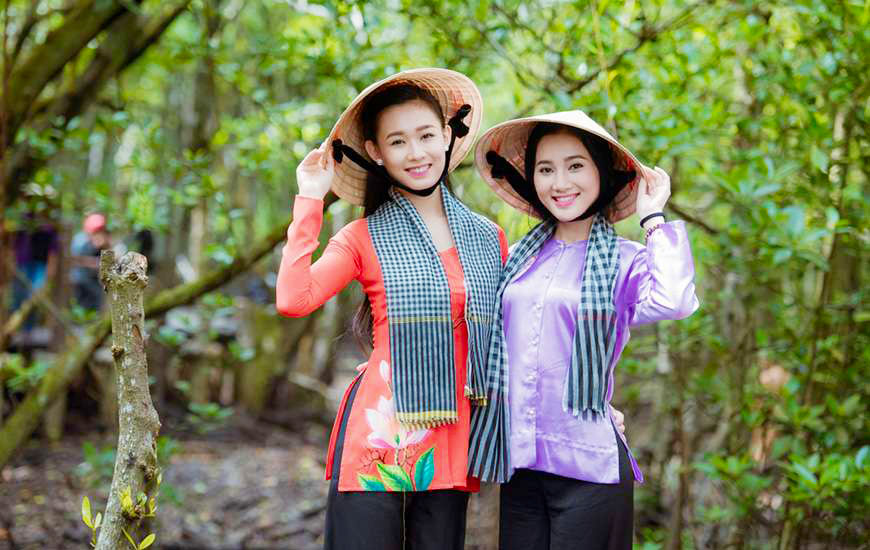
Characteristics of Vietnamese traditional dress
Vietnamese traditional dress is characterized by its symbolic significance and unique design features. At the heart of this attire lies the Áo Dài, a garment whose silhouette and style embody grace and cultural depth. Throughout Vietnam, these garments vary in style and functionality, yet remain unified through common values of elegance, modesty, and connection to cultural roots. Each dress, drawing from a wealth of regional variations and design complexities, speaks of a broader narrative celebrating Vietnam’s vibrant history and cultural identity. This variety not only showcases the nation’s aesthetic diversity but also reinforces the profound role traditional attire plays in Vietnamese life.
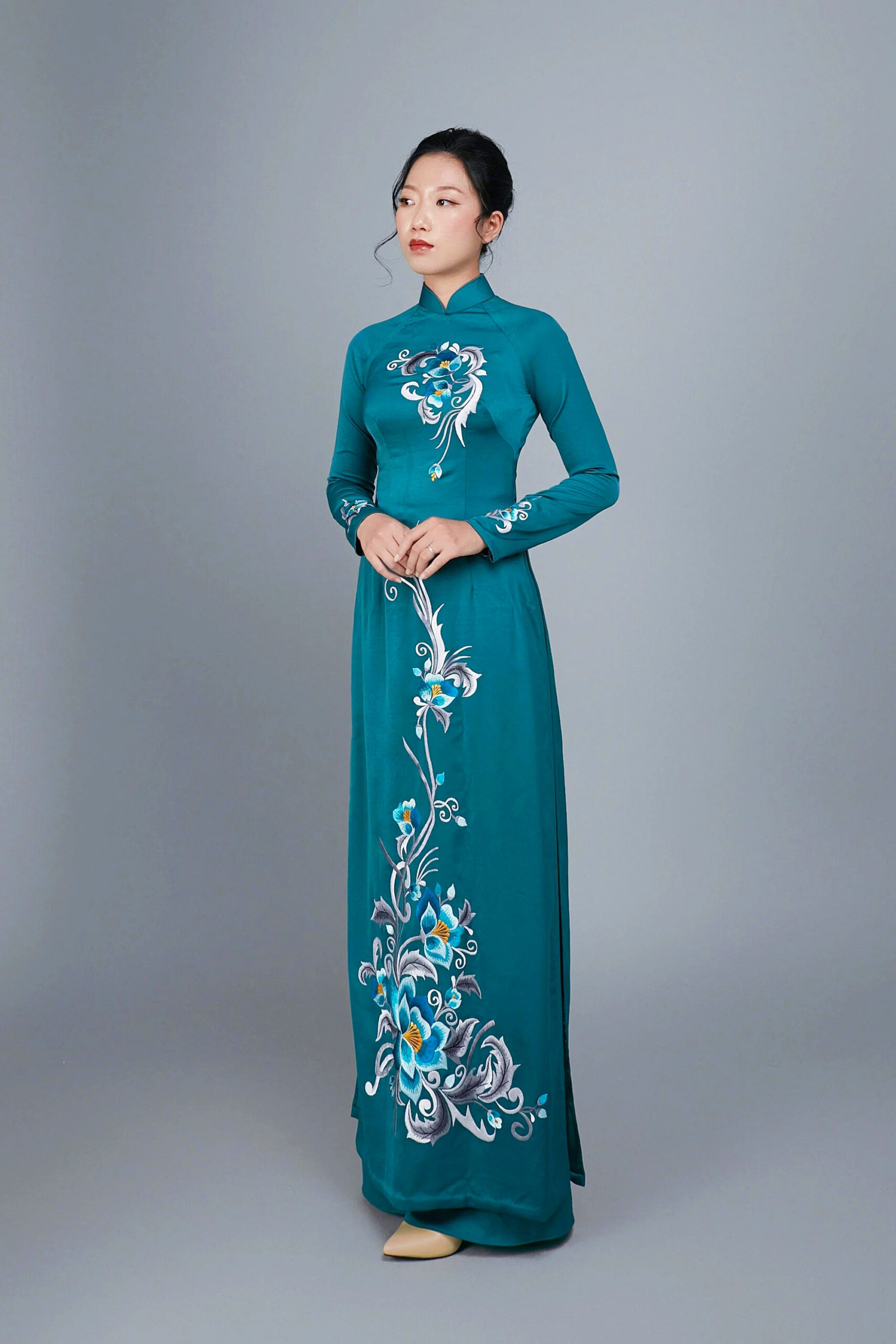
Description and design features of Ao Dai
As a quintessential representation of Vietnamese traditional attire, the Áo Dài captures both elegance and cultural resonance. This two-piece garment typically consists of a tailored, long tunic worn over loose-fitting trousers, creating a graceful juxtaposition of formality and fluidity. The design embodies sophistication with its high neck and long sleeves often featuring intricate embroidery that adds a touch of artistry and personal expression.
The Áo Dài is an artistic masterpiece, with each garment personalized to fit the wearer’s body shape, enhancing natural curves while maintaining a modest appearance. Crafted from materials like silk and brocade, the Áo Dài flows effortlessly, embodying luxury and comfort. This choice of materials reflects the Vietnamese appreciation for high-quality fabrics that enhance the dress’s fluidity and elegance.
Color symbolism plays a significant role in the design of an Ao Dai, with different hues denoting varied cultural meanings. White, symbolizing purity and innocence, is often worn by schoolgirls and brides, while vibrant reds and yellows are donned during celebrations such as Tết festivals and weddings, representing luck and prosperity. Such thoughtful color choices allow the Áo Dài to communicate both personal and cultural narratives.
Design innovations have led to contemporary interpretations of the Ao Dai, incorporating shorter tunics, modern cuts, and even blending Western styles while preserving their cultural core. Designers continue to experiment with new patterns, embroideries, and embellishments, resulting in a garment that elegantly marries tradition with modern fashion sensibilities. This dynamic approach ensures that while the Ao Dai remains deeply rooted in tradition, it is also celebrated as a modern wardrobe staple.
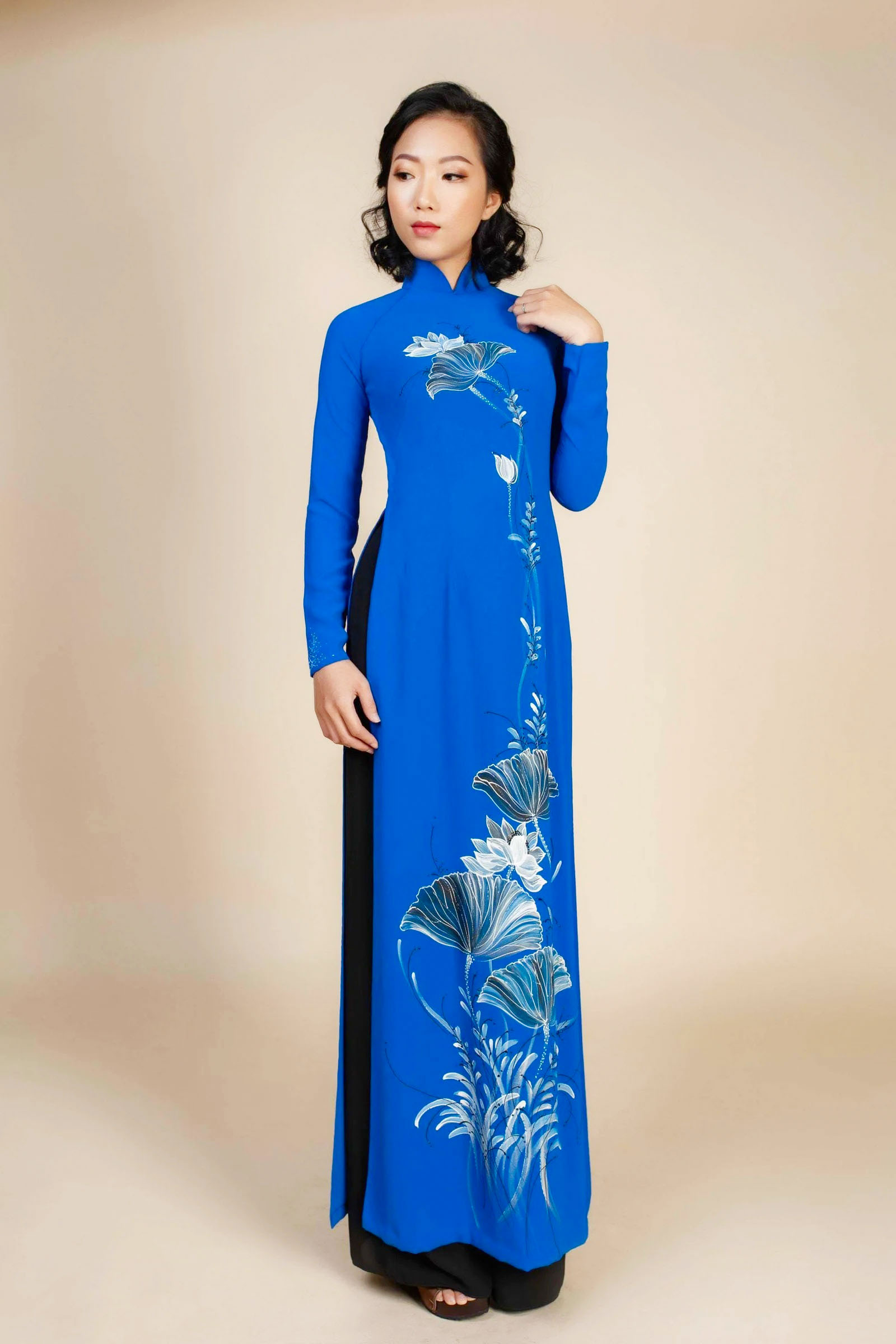
Materials used in Vietnamese traditional clothing
Vietnamese traditional clothing employs a diverse array of materials, each chosen for its unique properties and cultural symbolism. Among these, silk stands out as a favored fabric, known for its luxurious texture and ability to flow beautifully, making it the perfect choice for crafting sophisticated garments like the Áo Dài.
Alongside silk, brocade is another treasured material within Vietnamese clothing, often reserved for formal occasions due to its rich patterns and complex textures. Used in ceremonial wear, such as the Ao Gấm, it signifies opulence and is often emblazoned with cultural motifs. Cotton and hemp, on the other hand, are practical, durable options ideal for daily wear. These materials have been used for generations in rural regions, providing comfort and resistance to frequent usage.
The choice of materials is carefully considered to align with both functionality and cultural expression. Each fabric serves a dual purpose, not only providing comfort and style but also conveying stories of craftsmanship and tradition. The juxtaposition of textures in Vietnamese garments the richness of silk against the simplicity of hemp reflects a balance that is pivotal to the nation’s cultural identity.
In a broader sense, the integration of high-quality materials into traditional wear reflects the Vietnamese philosophy of sustainability and respect for nature. Natural dyes are often employed in the coloring process, further reinforcing the sustainable approach deeply ingrained in traditional Vietnamese craftsmanship.
Regardless of the fabric, what’s paramount is the underlying cultural narrative, ensuring that each garment is not merely an article of clothing but a canvas that reflects the art, culture, and values inherent in Vietnamese life.
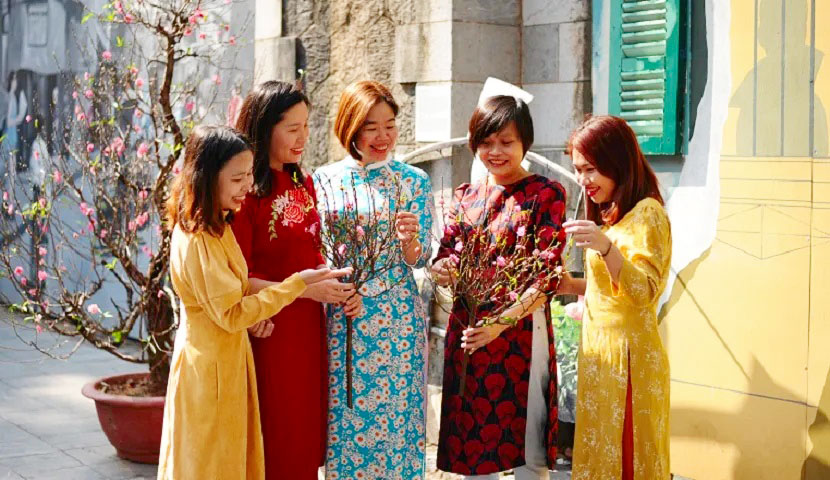
Color symbolism in Vietnamese attire
Color symbolism is a crucial aspect of Vietnamese attire, influencing how garments are perceived and worn across different occasions. Each color carries specific cultural connotations, often tied to emotions, beliefs, and societal values, playing a prominent role in the design and purpose of traditional clothing.
Red, a symbol of prosperity and happiness, is commonly seen during festive celebrations such as Tết and weddings, reflecting vibrant and auspicious energy. Similarly, yellow is often associated with royalty and wealth, frequently employed in garments for those of higher status or during important cultural events. These colors inherently evoke a sense of joy and celebration, inviting positive energies to communal gatherings.
Conversely, white, often representing purity and mourning, is typically worn at funerals and by schoolgirls, offering a stark yet poignant reminder of the cycle of life, a reflection of both beginnings and endings. Within Vietnamese society, these color choices convey respect for tradition and a deeper understanding of life’s interconnectedness.
The symbolism extends beyond the choice of a single color, encompassing combinations and patterns that together articulate shared cultural narratives. The diverse palette includes hues like green for tranquility and blue for peace, each chosen with intention to represent specific values and sentiments.
Ultimately, this thoughtful approach to color in Vietnamese attire ensures garments maintain a deep, symbolic connection to their wearers’ lives, enhancing their relevance in cultural expressions and emphasizing alignment with society’s collective emotions and aspirations.
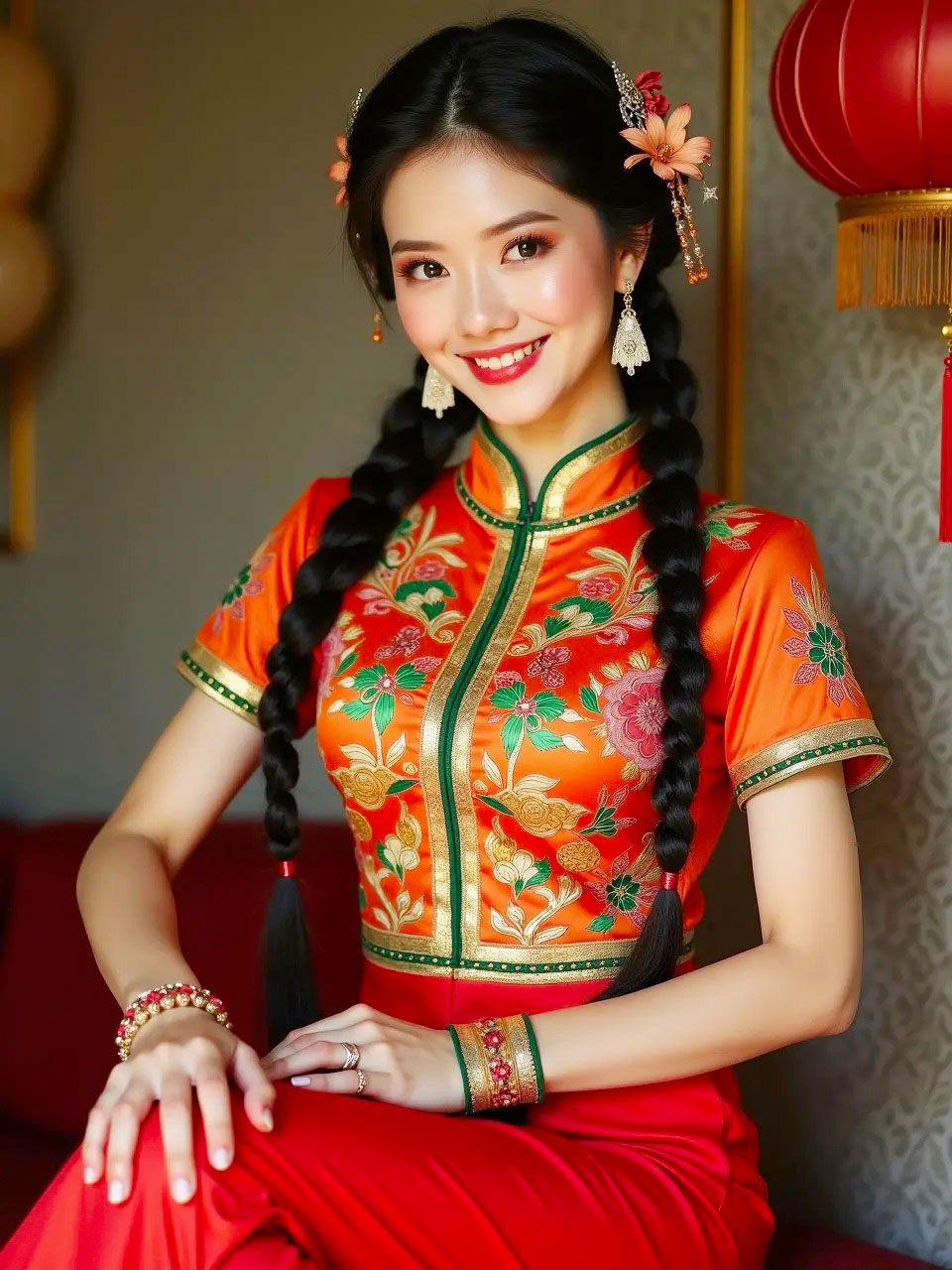
Types of Vietnamese traditional dress
Vietnamese traditional dress is diverse, with each type serving distinct cultural and functional roles. The versatility of these garments, including the elegant Áo Dài, the casual Ao Ba Ba, and the formal Áo Gấm, showcases the spectrum of Vietnamese attire. These dresses are unified by their emphasis on simplicity, comfort, elegance, and their ability to convey cultural pride. Across Vietnam, these garments vary regionally but hold a shared significance in illustrating the nation’s beauty and history. Through ceremonial wear to everyday attire, they remain a vital part of Vietnam’s cultural lexicon, cementing their position in both tradition and modernity.
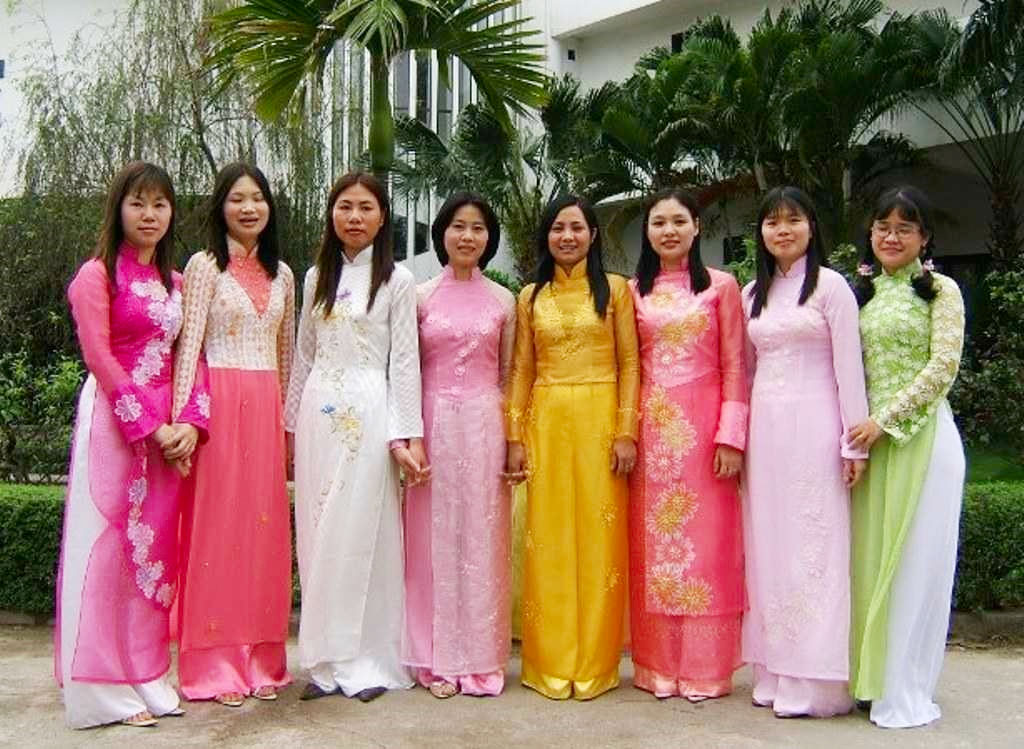
The Ao Dai: National costume of Vietnam
As the national costume of Vietnam, the Áo Dài serves as a ubiquitous symbol of cultural pride and elegance. Recognized for its artistic simplicity and flowing lines, the Ao Dai embodies Vietnamese customs while adapting to modern sensibilities. Its distinctive appearance a long tunic draped over trousers accentuates both the graceful movement and poise attributed to Vietnamese femininity.
Worn during numerous ceremonies, the Ao Dai expresses profound cultural significance. Brides adorn in red Ao Dais during weddings, embodying love and prosperity, whereas students don white versions, symbolizing purity and innocence. This diverse range of applications signifies the Ao Dai’s versatility, reflecting both the younger generation’s modern aspirations and the retention of historical values.
The Áo Dài has historically undergone significant transformations, shaping its modern form. In the 18th century, early versions were influenced by traditional gowns hailing from royal courts. This gradually morphed into more streamlined garments in the 20th century, thanks in part to visionary artists who introduced Western tailoring techniques while maintaining core Vietnamese aesthetics.
Design elements unique to the Ao Dai include elaborate embroideries that often depict natural and sacred motifs, adding depth and personalization to each piece. These features, combined with rich, meaningful colors, emphasize the wearers’ personal stories while remaining steeped in traditional lore.
Ultimately, the Ao Dai’s enduring appeal lies in its ability to transcend cultural boundaries, showcasing Vietnamese elegance and cultural richness on the global stage without losing its unique identity. Its vibrant representation in Vietnamese life is ensured as it bridges the gap between the past and the present, making it an everlasting and celebrated icon of Vietnam’s heritage.
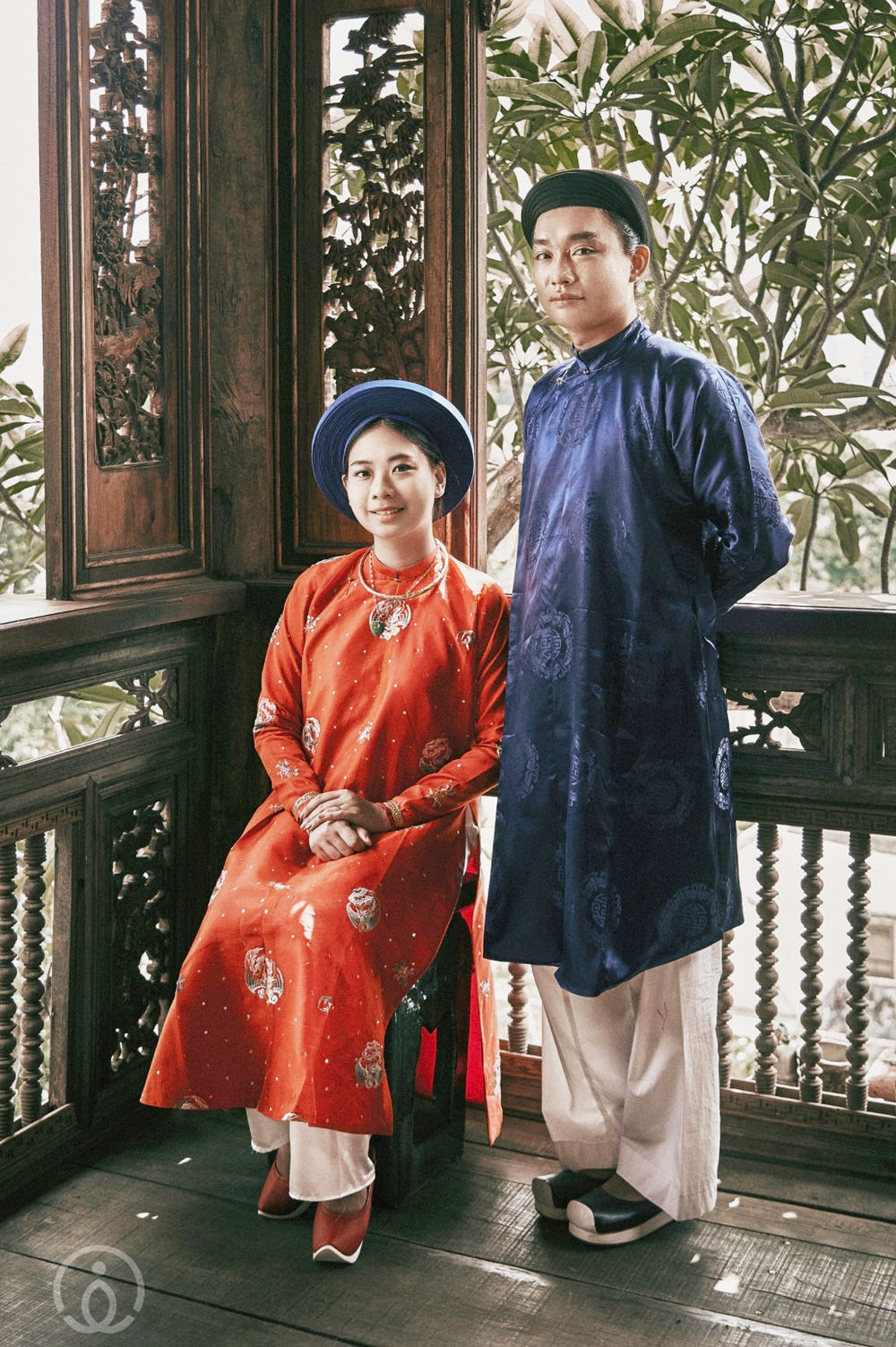
Regional variations of the Ao Dai
The regional variations of the Ao Dai highlight Vietnam’s cultural diversity as they reflect the unique characteristics of different landscapes and lifestyles across the country. Each region adds its flavors to this iconic attire, thereby enriching the national tapestry with distinct patterns, materials, and functions.
In Northern Vietnam, Ao Dais are often crafted with heavier fabrics to adapt to the cooler climate, showcasing refined, understated elegance. The styles from this region frequently incorporate muted tones, reserving more vibrant colors for special occasions. Thirty modern touches blend with classical cuts, resulting in an Ao Dai that harmoniously balances tradition with innovation.
Conversely, Central Vietnam infuses its Ao Dai with artistic flourishes, boasting elaborate embroidery that mirrors the region’s rich cultural heritage. The cultural epicenter of Hue is celebrated for its regal Vietnamese aesthetics, with Ao Dais draping gently to reflect a dignified grace reminiscent of ancient times.
Southern Vietnam has its interpretation of the Ao Dai, a testament to the region’s sunny disposition and lively culture. Southern styles incorporate bright colors and airy fabrics, crafted for comfort in the tropical heat. These designs prioritize ease and vivid expressions, making customization a popular choice among locals and visitors alike who wish to capture the energy of the South.
Each regional variant serves as a testament to Vietnam’s various landscapes, climates, and historical influences, transforming a single garment into a compelling narrative that celebrates the nation’s rich and varied cultural fabric. This diversity is a source of pride, honoring distinctions while uniting the Vietnamese identity in its shared love for tradition and creativity.

Other traditional outfits: Ao Ba Ba and Áo Gấm
In addition to the famed Áo Dài, Vietnam’s traditional attire includes other garments such as the practical Ao Ba Ba and the ornate Áo Gấm, each serving different purposes and cultural expressions within Vietnamese society.
The Ao Ba Ba is a quintessential outfit, particularly prevalent in Southern Vietnam. Characterized by its simplicity and adaptability, the Ao Ba Ba consists of a lightweight, loose-fitting top and pants that are ideal for the agricultural lifestyle of the Mekong Delta. This attire benefits from both silk and cotton, enabling wearers to work comfortably in humid, warm conditions. The Ao Ba Ba captures the spirit of rural Vietnam, embodying functionality while retaining an intrinsic aesthetic charm.
On the opposite end of the spectrum lies the Áo Gấm, renowned for its exquisite elegance and elaborate detailing. This garment, typically worn during formal occasions, is fashioned from brocade, showcasing rich patterns and motifs that symbolize cultural heritage. Its luxurious texture and appearance render it appropriate for weddings, festivals, and other ceremonial events.
Both the Ao Ba Ba and Áo Gấm contribute significantly to the diversity of Vietnamese attire, emphasizing the vital role clothing plays in reflecting lifestyle, honoring traditions, and facilitating cultural gatherings. Together with the Ao Dai, they paint a broader picture of Vietnam’s sartorial landscape, highlighting a balance between everyday life and celebration, practicality, and artistry.
These outfits are more than garments; they represent a way of life that is deeply interwoven with the landscape and societal norms of Vietnam. This intrinsic link between traditional clothing and everyday life is a testament to the enduring legacy and significance of these quintessential Vietnamese pieces.
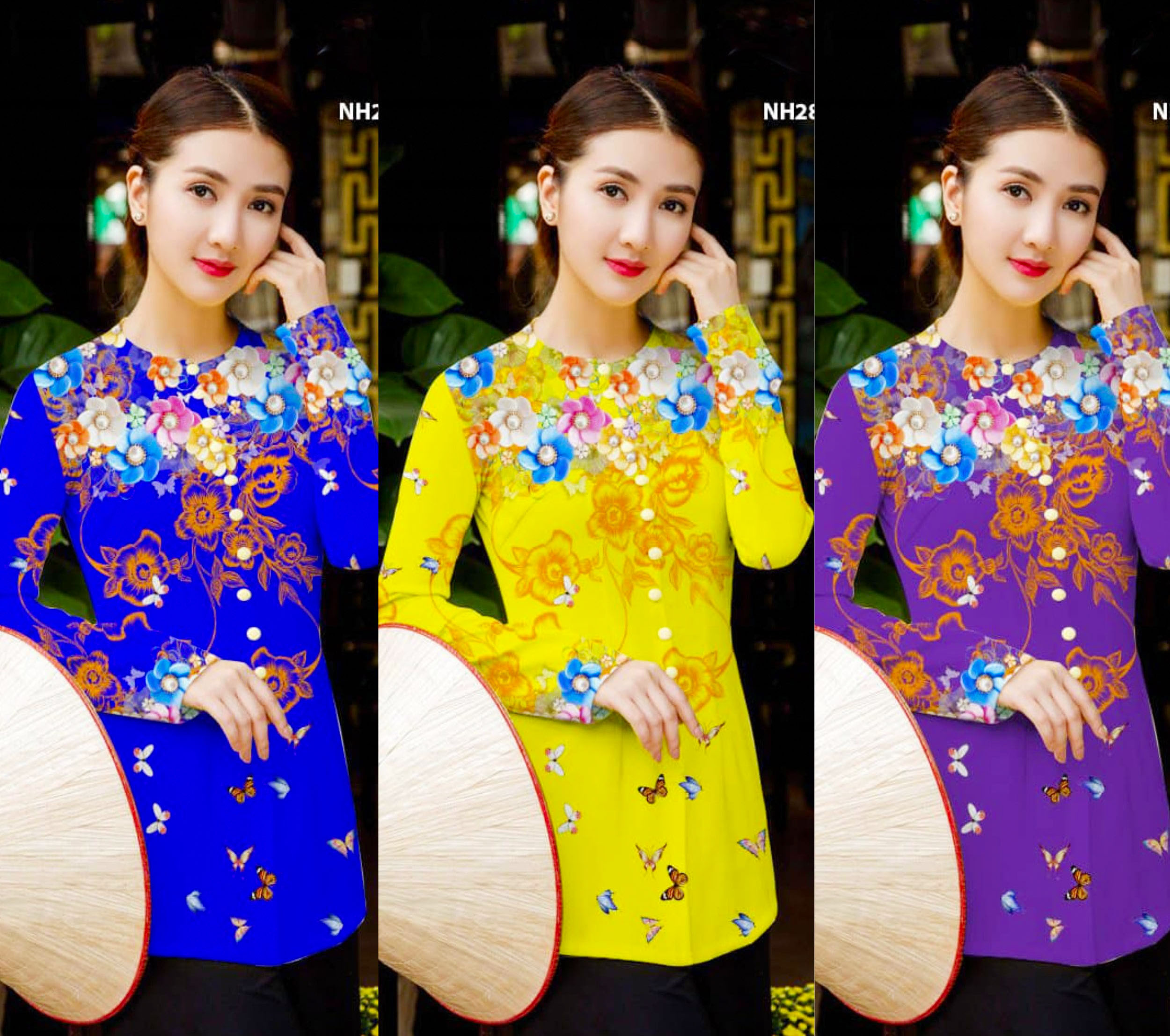
Occasions for wearing traditional dress
The versatility of Vietnamese traditional dress is celebrated through various occasions, from significant cultural events to everyday wear. These garments serve to embody cultural pride and connection, solidifying their position within Vietnamese society. From the Ao Dai to the Ao Ba Ba, traditional attire is a staple during festivals, weddings, and public gatherings, reflecting the deeply ingrained appreciation for national heritage. Such occasions underscore their relevance in both historical and contemporary contexts, offering opportunities to foster unity and express national identity with beauty and elegance.
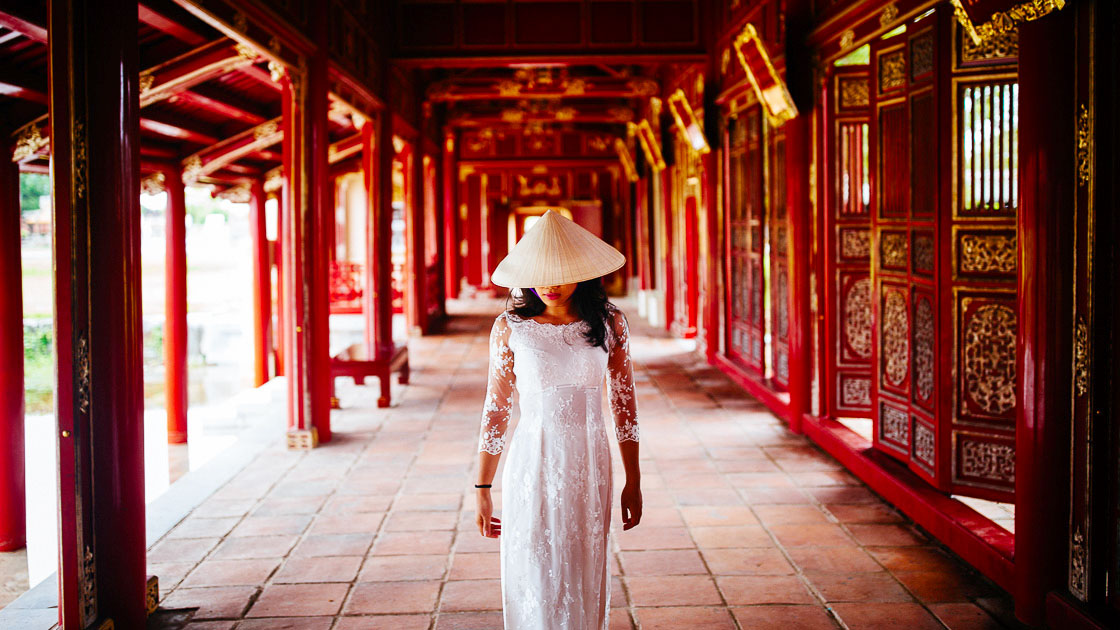
Festivals and celebrations featuring traditional attire
In Vietnam, festivals and celebrations are integral to cultural expression, offering vibrant displays of unity and heritage. These events showcase traditional attire like the Áo Dài, which serves as a prominent symbol of community pride and cultural continuity.
One of the most notable occasions is Tết Nguyên Đán, the Lunar New Year, celebrated annually in January. During Tết, people don brightly colored Ao Dais in shades of red, symbolizing renewed beginnings and prosperity. Families gather in traditional attire to honor ancestors, visit temples, and participate in festivities, encapsulating the essence of Vietnamese spirit.
The Mid-Autumn Festival in September is another important cultural event, emphasizing family unity and celebrating children. Here, traditional clothing highlights vibrant processions, where kids and adults alike wear Ao Dais while carrying lanterns under the full moon. The attire not only enhances the visual spectacle but also reinforces familial bonds and cultural narratives.
In April, the Hung Kings Temple Festival celebrates Vietnam’s revered founders. Participants don traditional garments, including the Áo Gấm, amidst rituals and ceremonial activities that highlight the nation’s deep respect for history and legacy. Such attire serves as a vessel for cultural preservation and remembrance.
These festivals are more than just celebrations; they are a reaffirmation of Vietnam’s cultural heritage, providing opportunities to showcase national dress as an emblem of identity and unity. They provide third a bridge connecting the past with modern-day perspectives, preserving traditions that continue shaping Vietnam’s social fabric.
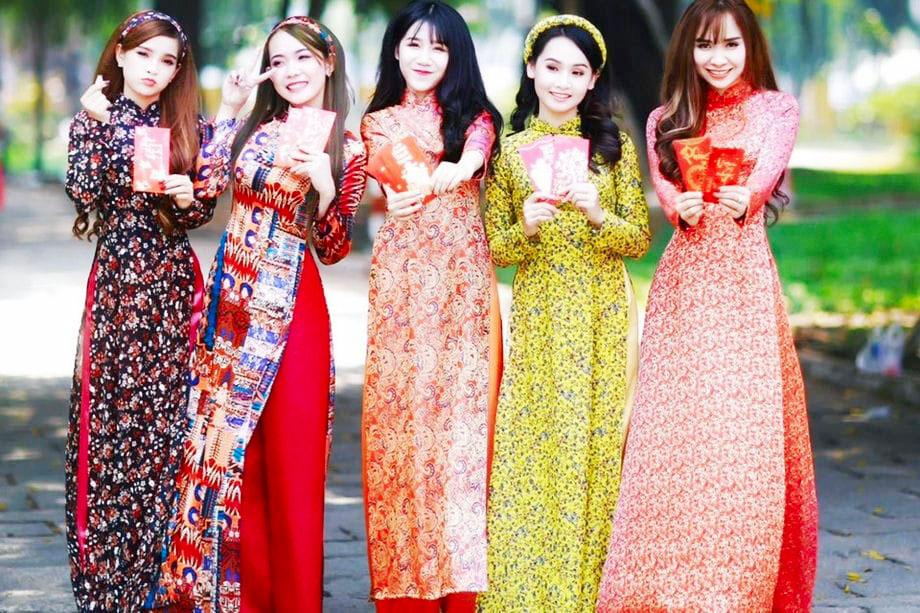
Role of traditional dress in Vietnamese weddings
In Vietnamese weddings, traditional dress plays a pivotal role, symbolizing both familial ties and cultural continuity. These ceremonies are marked by the visual splendor of garments like the Áo Dài, which embodies elegance, heritage, and sophistication.
Brides adorn themselves in vibrant Ao Dais, often tailored in red or pink to signify good luck and happiness. These dresses are ornately embellished, sometimes with gold embroidery or cultural motifs, making them the centerpiece of the ceremony. Additionally, brides may choose a white Ao Dai for purity during certain wedding events, such as the engagement ceremony or tea ceremony.
Grooms complement this by wearing their own Ao Dais, which traditionally come in understated yet distinguished colors like blue or yellow. The ensemble harmonizes with the bride’s attire, ensuring a cohesive and culturally resonant appearance. The choice of these garments highlights the significance of tradition, maintaining continuity through generations.
The attire is not limited to the bride and groom; families also participate by wearing corresponding Ao Dais, enhancing the celebration’s symbolic unity and achievement of collective joy. Traditional garments affirm respect and connection between families, strengthening communal bonds in meaningful cultural practices.
Weddings encapsulate ceremonial traditions, nature, and Vietnamese society’s social structure. Traditional attire, deeply interwoven with symbolism and beauty, bridges history and modernity, serving as a reminder of the enduring relevance of Vietnam’s cherished cultural heritage.
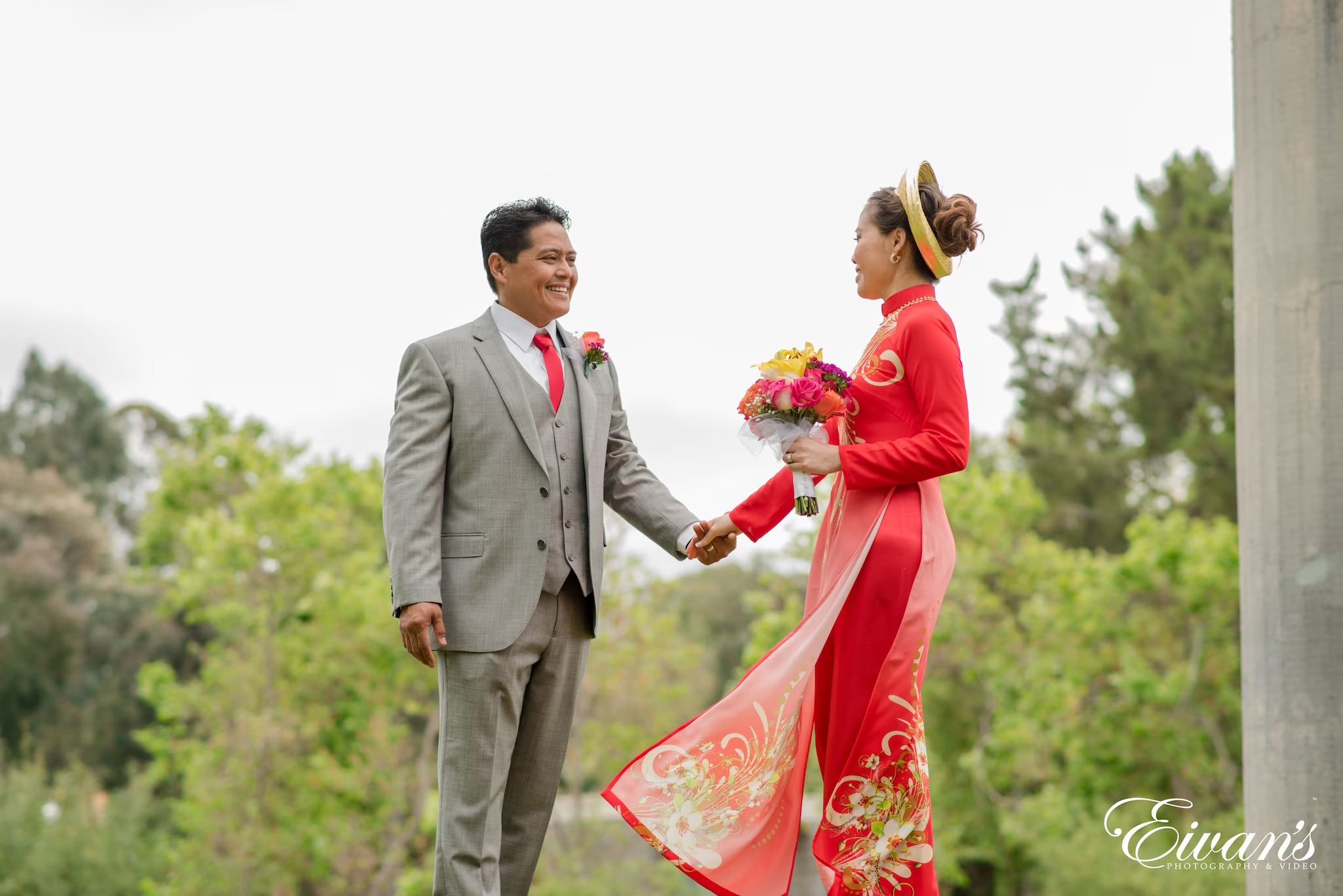
Daily wear: When and where to wear Ao Dai
The Ao Dai, while often seen in ceremonies, is also a staple in daily Vietnamese life. Its practical yet elegant design allows for a seamless transition between everyday activities and special occasions, ensuring its versatility.
In educational settings, the Ao Dai serves as a school uniform for female students, particularly in urban areas, highlighting the commitment to cultural values from a young age. The uniform, typically white, signifies purity and dedication, fostering a sense of national pride and identity among students.
At workplaces, especially in service industries like airlines or hospitality, employees frequently wear the Ao Dai. This traditional uniform elegantly showcases Vietnamese culture to international visitors while maintaining a professional appearance. It also reflects institutions’ dedication to preserving a unique cultural identity within a globalized economy.
Outside of these formal environments, the Ao Dai is regularly worn during casual gatherings and family events. Here, vibrant colors come into play, with wearers choosing hues that reflect their personalities or those suited to the occasion. Everyday wear of the Ao Dai stands as a testament to its adaptability and enduring appeal.
Through each context, the Ao Dai captures both heritage and modern perspectives, serving as a daily reminder of Vietnam’s lasting cultural richness. It bridges generations and societal shifts, affirming its permanence as a cherished element of Vietnamese life.
Cultural implications of traditional dress
Traditional Vietnamese dress embodies profound cultural implications, linking modern society with historical roots. Whether seen at cultural festivals, formal ceremonies, or everyday encounters, these garments enrich the wearer’s connection to national identity. Through vibrant colors, intricate designs, and symbolic meanings, traditional attire reinforces a sense of pride and continuity that transcends time. As Vietnam navigates the complexities of global cultural exchange, the continued prominence of traditional dress, particularly the Ao Dai, acts as a testament to the country’s enduring heritage and the values it upholds within an ever-evolving world.
The influence of traditional dress on Vietnamese identity
Traditional dress, particularly the Áo Dài, holds a profound influence over Vietnamese identity, seamlessly weaving together history, culture, and societal values. This iconic garment personifies elegance and grace, symbolizing the beauty of Vietnamese women while remaining a contemporary emblem of national pride.
Historically, the Áo Dài has navigated expansive transformations, evolving from royal attire to becoming a canvas of personal and cultural expression. Its presence during significant cultural events, such as weddings and national celebrations, underscores its lasting importance in upholding national values. The Áo Dài serves not only as clothing but as a powerful symbol that connects individuals to their heritage amid rapid modernization.
By celebrating Vietnamese femininity and modesty, traditional dress embodies cultural aesthetics and national ideals, fostering a deep respect for tradition. The choice of colors and patterns in an Ao Dai often carries symbolic meaning red signifying prosperity and joy, while lighter hues reflect purity and tranquility. Together, these elements enhance a narrative that spans historical struggles and triumphs.
In modern times, the Áo Dài’s relevance is sustained through designer innovations, blending contemporary elements with traditional principles. This ensures an enduring connection with younger generations who resonate with its cultural significance. The Áo Dài’s global appeal underscores continual relevance, standing as a tangible reminder of Vietnam’s rich heritage and cultural identity amidst modernity’s complexities.

Modern adaptations of traditional clothing
Modern adaptations of traditional Vietnamese clothing reflect a creative interplay between cultural heritage and contemporary fashion trends. While traditional garments like the Ao Dai hold steadfast appeal, modern variations emerge, introducing fresh perspectives while preserving core aesthetics.
Designers integrate new elements with ease, experimenting with cuts, fabrics, and styles to reflect individual preferences. The result is a harmonious blend, where the Ao Dai’s long tunic and trousers adapt to modern sensibilities, creating approachable styles suitable for diverse settings, from corporate environments to casual outings.
Enhanced material choices also redefine traditional dress without compromising its symbolic force. Innovations in textiles provide additional comfort and functionality, making garments more accessible and appealing to younger generations exploring heritage as a form of identity.
Alongside modern design elements, Vietnamese traditional attire resonates with a broader audience, highlighting the importance of culture amidst globalization. Its presence during international fashion shows and cultural events further accentuates a universal appreciation for Vietnamese aesthetics, while tourist engagement invites cross-cultural exploration.
Ultimately, modern adaptations do not detract from traditional attire’s cultural depth; they amplify its enduring legacy by bridging authentic heritage with future-forward approaches, ensuring its status as a cherished cultural icon.
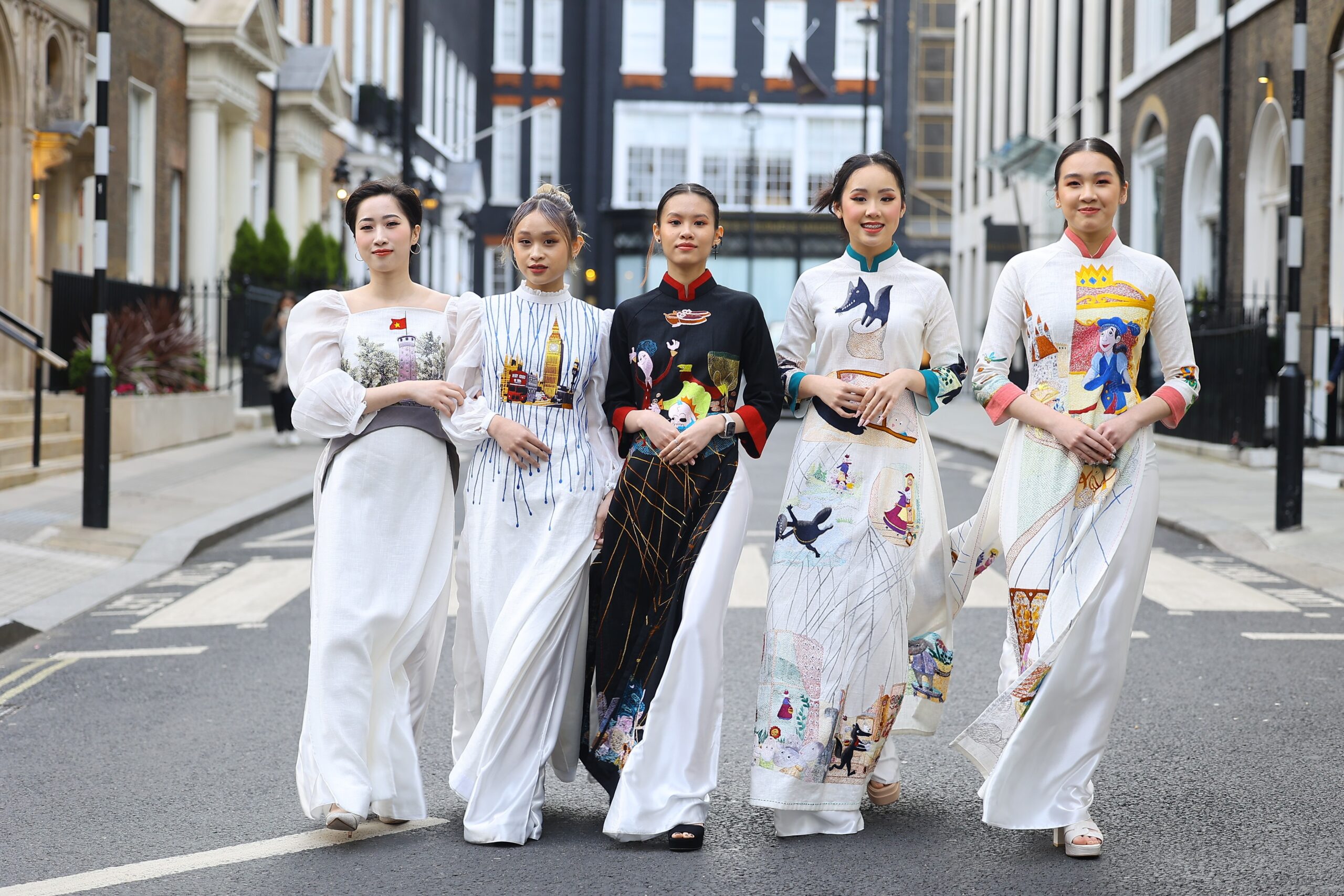
The role of traditional dress in tourism and cultural heritage
Traditional dress plays a pivotal role in tourism and cultural heritage, serving as a living representation of Vietnam’s rich history and identity. As travelers venture through Vietnam’s landscapes, the presence of traditional attire like the Ao Dai provides an immediate connection to the nation’s past and present, enhancing cultural experiences.
Tourists are often drawn to the sophistication and elegance of traditional Vietnamese attire, making the Ao Dai a popular souvenir choice that extends their Vietnamese experience beyond their stay. This creates opportunities for local artisans who specialize in crafting these garments, thus supporting cultural preservation and sustainable tourism.
Throughout cultural sites and events, traditional dress heightens the authenticity and allure of the visitor experience, allowing travelers to immerse themselves in Vietnam’s heritage. Wearing an Ao Dai becomes a rite, transforming holiday moments into an intimate connection with local traditions and shared human values.
Moreover, traditional attire’s visibility reinforces Vietnam’s cultural identity on an international scale, engaging global audiences and promoting cross-cultural appreciation. This intangible heritage serves as a valuable asset to Vietnam’s tourism landscape, blending beautifully with natural architecture, traditions, and stories.
In essence, traditional dress acts as a cultural ambassador, fostering greater understanding and appreciation of Vietnamese culture and further anchoring Vietnam’s place in the global tapestry of shared human history.
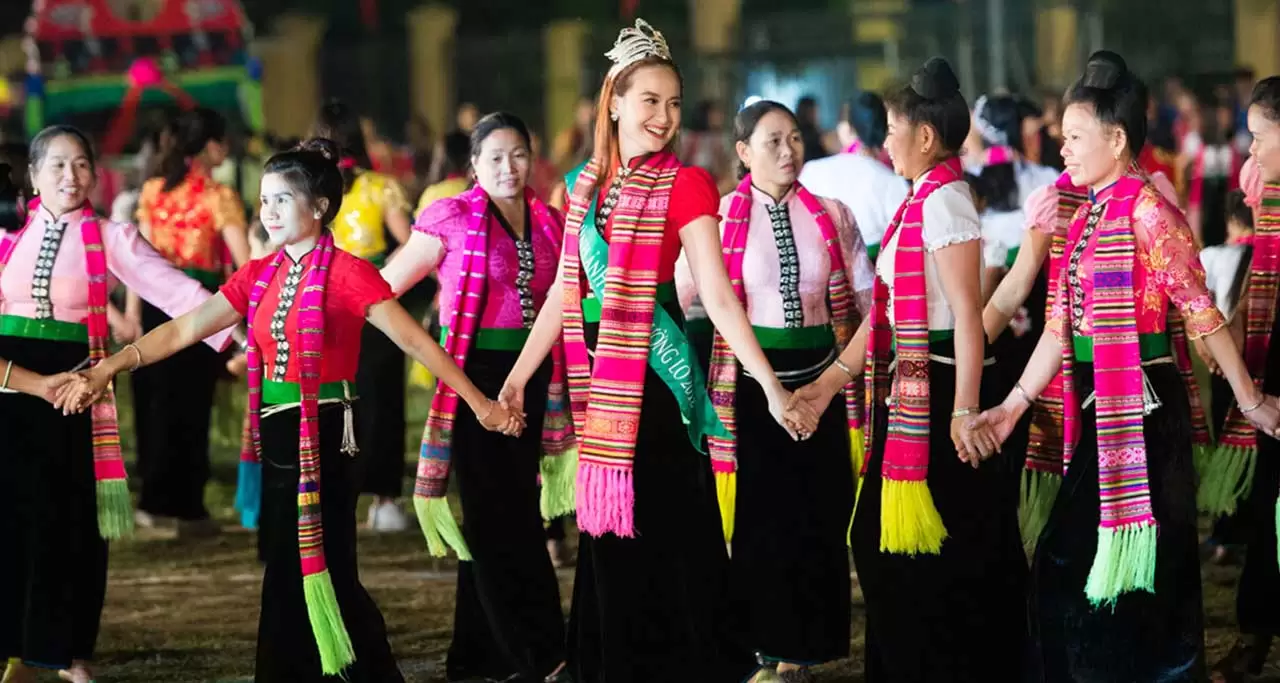
Buying and customizing Vietnamese traditional dress
Buying and customizing Vietnamese traditional dress is an enriching process that bridges cultural heritage with personal expression. This journey, from choosing fabrics to tailoring with skilled craftsmen, ensures a garment that represents both individual style and shared history. Whether opting for the timeless elegance of the Ao Dai or other traditional wear, the process provides insight into Vietnam’s cultural values. Investing in a piece of traditional attire is an opportunity to embrace cultural narratives and craftsmanship, resulting in a garment that enhances the wearer’s connection to Vietnam’s vibrant heritage while offering a personalized expression within the global fashion landscape.
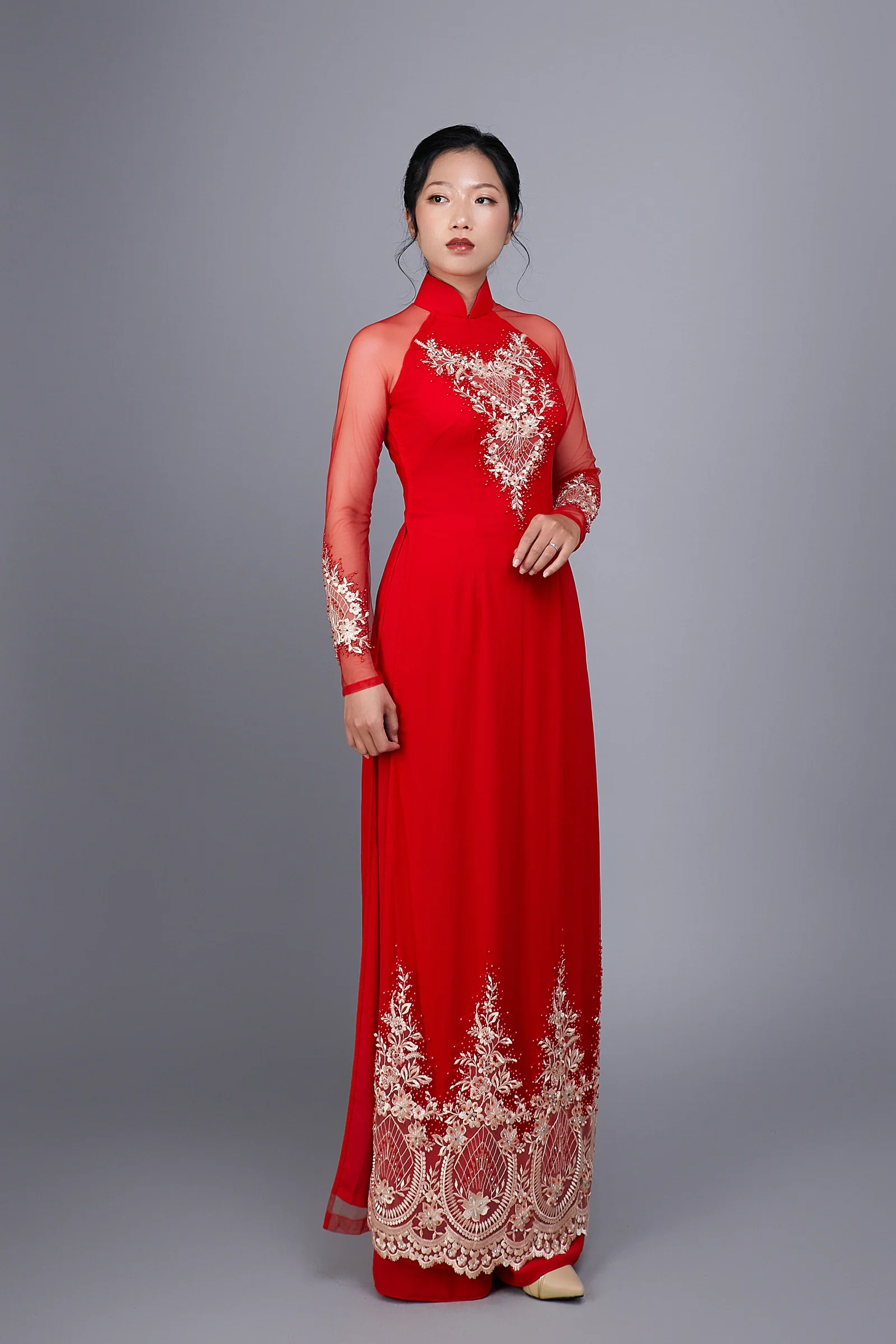
Reputable tailors and shops for traditional dress
Reputable tailors and shops are crucial in ensuring high-quality Vietnamese traditional attire, providing a memorable experience for those seeking personalized garments. Hoi An, a renowned tailoring destination, offers an array of options catering to varying needs and preferences.
- Yaly Couture: Esteemed for its exceptional service, Yaly Couture boasts an extensive catalog of fabrics and styles, with more than 30 years of crafting personalized Ao Dai that balance elegance and comfort. Their commitment to customization assures clients a unique, lasting garment.
- Bebe Tailor: Recognized for bespoke designs and 15 years of superior craftsmanship, Bebe Tailor consistently delivers quality outfits. With multiple locations, they accommodate various demands while providing an excellent customer experience.
- A Dong Silk: Established in 1997, A Dong Silk is celebrated for its precise tailoring process and vast fabric selection. Their 10-minute measurement process ensures a flawless fit, and fluent English-speaking staff make international interactions seamless.
These reliable establishments present an unparalleled opportunity to obtain or customize an Ao Dai tailored to one’s desires, while simultaneously supporting local craftsmanship. This engagement contributes to both the appreciation and preservation of Vietnamese cultural identity.
Renting vs. buying traditional attire
Deciding between renting and buying traditional attire entails weighing practical considerations and personal preferences. Each option offers distinct advantages depending on occasion, budget, and cultural engagement level.
Renting attire is ideal for those attending specific events, such as weddings or festivals, offering affordable access to high-quality garments without the commitment of ownership. Rental services frequently include a broad selection of styles and sizes, ensuring choices cater to diverse tastes.
Conversely, purchasing an Ao Dai provides greater scope for self-expression and personalization through fabric selection, design details, and fit. Buyers can impose a unique stamp on their garment, embodying personal values while honoring tradition. Despite often higher costs, ownership yields a lifelong, cherished keepsake of Vietnamese culture.
When selecting between renting or buying, key factors include:
- Occasion relevance.
- Investment longevity.
- Personal taste alignment.
- Cultural significance.
Ultimately, both options fulfill distinctive needs, offering valuable ways to engage with Vietnamese culture thoughtfully and authentically.
Tips for choosing the perfect Ao Dai
Choosing the perfect Ao Dai involves considering both style and cultural significance, ensuring the garment aligns with personal taste and occasion requirements.
Assessing Body Type: Ensuring an optimal fit starts with understanding body shape to highlight natural curves. For instance, V-shaped necklines flatter those with broader shoulders, whereas high collars can enhance elegance and add length.
Choosing Fabrics: Prioritize materials that complement skin tone and suit event purposes. Traditional silks offer fluidity and grace, with versatility for formal occasions. Consider cotton blends for enhanced durability and everyday wear.
Color Significance: Select colors aligned with event context, defined by cultural symbolism. Traditional colors like red or yellow express vibrancy and prosperity, while softer shades imply subtlety and calm, suitable for daily settings.
Embellishment and Customization: Personalize the Ao Dai by incorporating motifs or embroidery aligned with personal stories or cultural heritage. These details accentuate individuality while preserving traditional authenticity.
In embracing Vietnamese tradition and achieving elegance, selecting the ideal Ao Dai necessitates balancing personal style, ancestral values, and modern-day relevance, ensuring a harmonious representation of cultural pride.
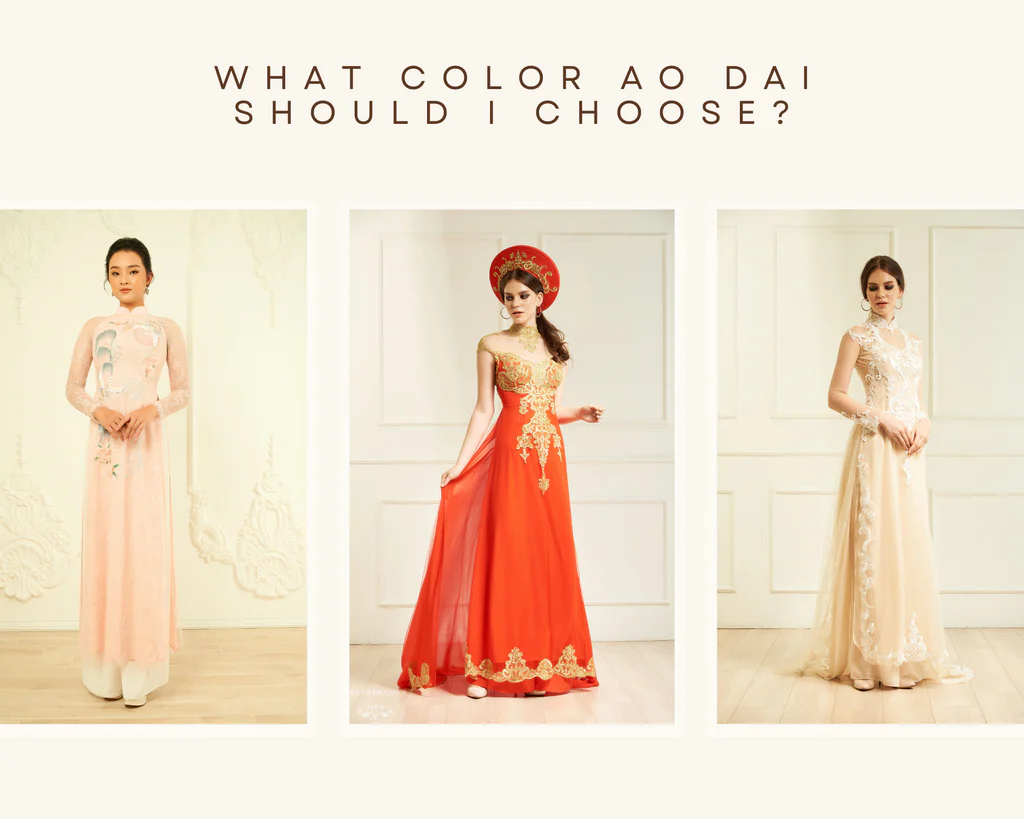
Etiquette and guidelines for wearing Vietnamese traditional dress
Etiquette and guidelines play a fundamental role in wearing Vietnamese traditional dress, underscoring the importance of cultural sensitivity and respect. From tailoring the perfect fit to embodying appropriate behavior, these practices ensure the garment remains a revered symbol of Vietnamese heritage. Whether for everyday encounters or formal events, adhering to etiquette reflects the values and traditions encapsulated in traditional attire like the Ao Dai. By maintaining these conventions, wearers honor the cultural narratives intricately woven into these garments, preserving their significance while celebrating the beauty of Vietnam’s timeless style.
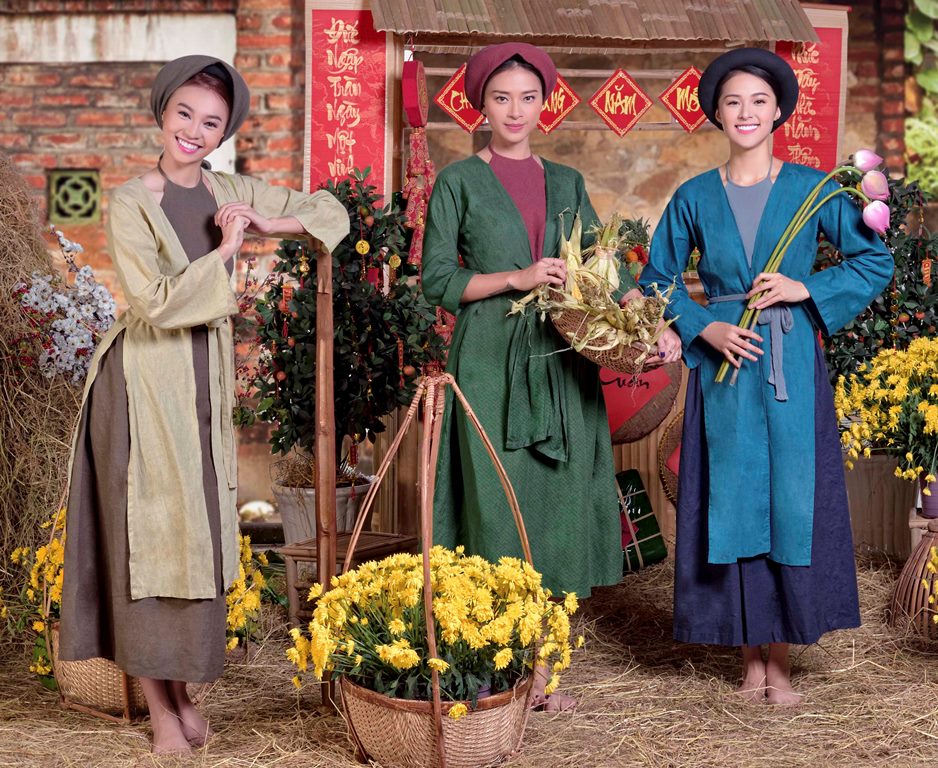
Cultural sensitivity in wearing traditional attire
Embracing cultural sensitivity is imperative when wearing Vietnamese traditional attire, promoting a deeper understanding and respect for its significance. Proper appreciation begins with honoring its history, context, and cultural values.
Understanding Symbolism: Colors, motifs, and embellishments often carry specific symbolism tied to emotional or historical narratives. Recognizing these meanings such as red for prosperity or white for purity enhances the ability to choose attire appropriately and respectfully.
Contextual Appropriateness: Traditional dress holds different connotations in various settings. While suitable at cultural or formal events, casual wear may require more subdued styles, ensuring respect for garment origins and cultural reverence.
Respecting Traditions: Honor cultural protocols, such as removing shoes at religious sites or observing traditional practices during ceremonies. Maintaining awareness of such etiquette aids in reinforcing the garment’s cultural integrity and building an authentic connection with Vietnamese heritage.
Engaging with attire thoughtfully facilitates cross-cultural understanding, preserving the nuances and values intrinsic to these cherished garments while enriching personal and collective experiences.
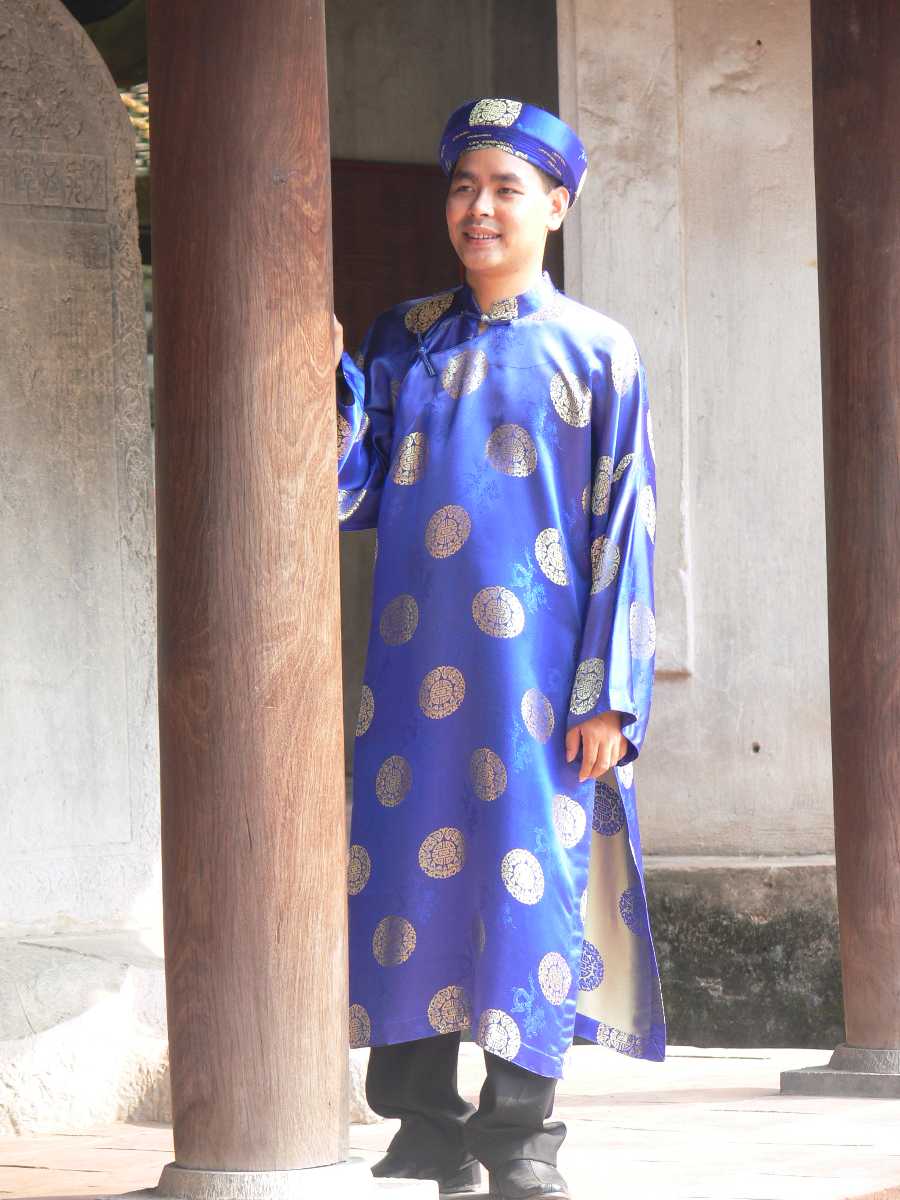
Proper fit and styling of Ao Dai
Achieving a proper fit and styling of the Ao Dai harmonizes individual subjects with cultural expression, requiring meticulous attention to detail for optimal effect.
Tailored Perfection: Custom tailoring is essential in obtaining a seamless fit, enhancing the natural silhouette while ensuring comfort. A fitted tunic should drape elegantly over wide-legged trousers, allowing for fluidity and movement, critical elements of the Ao Dai’s allure. High necklines and long sleeves contribute to its modest charm, melding contemporary style and tradition effortlessly.
Fabric Selection: Prioritize fabrics that embody elegance and practicality. Silk is a popular choice for formal occasions, offering a rich texture and captivating sheen. For versatile, everyday wear, explore cotton blends durable and breathable that align with both style and functionality.
Color Coordination: Colors are integral to an Ao Dai’s aesthetic and cultural significance. Understanding hues that flatter complexion and convey appropriate symbols enhances the attire’s visual and emotional impact, expressing themes of tradition, individual tales, or identity narratives.
Proper styling accentuates the Ao Dai’s essence, celebrating its timeless elegance and enduring cultural relevance while maintaining individuality amid shared heritage. These conscious choices underscore its unique charm, ensuring cherished representation of Vietnam’s diverse identity and aesthetics.
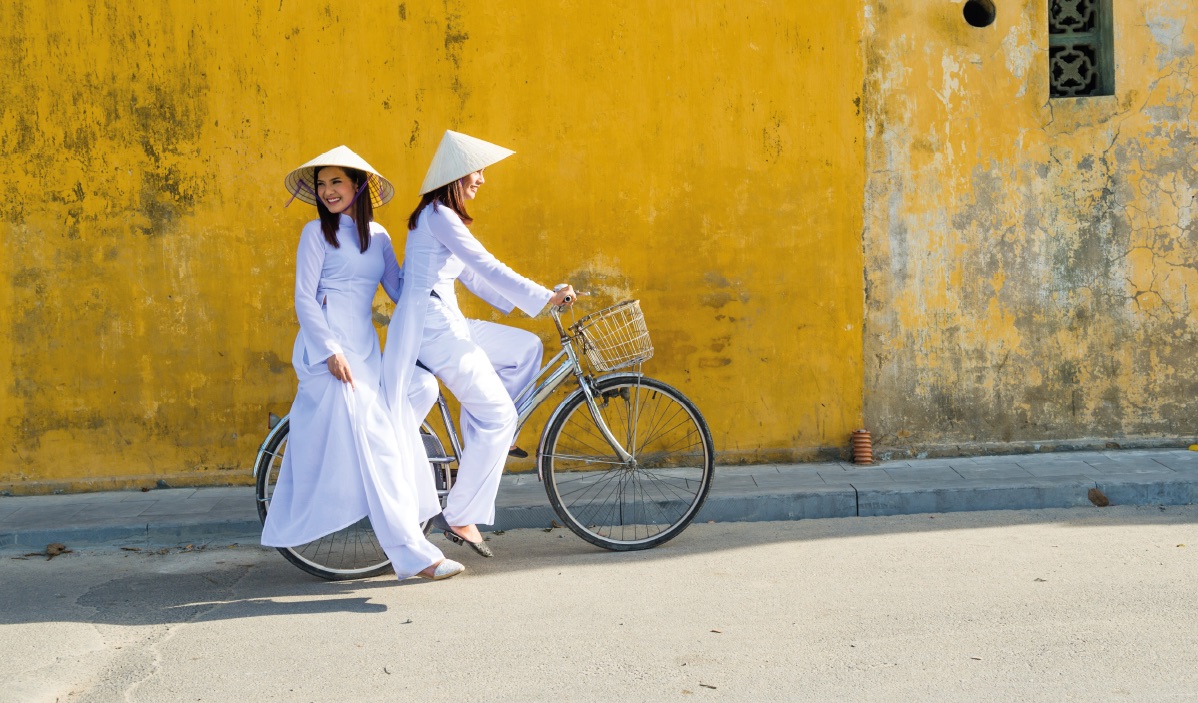
Behavior and demeanor while wearing traditional dress
Behavior and demeanor hold significant roles when wearing traditional dress, embodying Vietnamese values of grace and respect. These garments represent cultural pride and authenticity, necessitating mindful conduct reflective of their heritage.
Display Elegance: Wearing attire demands poise and respect, necessitating gentle interactions and graceful movements. This includes maintaining proper posture, composed walking, and considerate communication, aligning with cultural expectations of elegance and dignity.
Observe Protocols: Within cultural and ceremonial settings, adhere to established guidelines, ensuring attire aligns with event context and prescribed etiquette. This reinforces appropriate interactions and behaviors, underscoring the garment’s cultural resonance.
Maintain Quietness: Avoid excessively loud or disruptive behavior, reflecting traditional dress’s sophistication within public spaces. Participating in customary practices and respecting cultural sentiments illuminates an appreciation for heritage and wider cultural understanding.
Ultimately, behavior combined with traditional attire enhances its symbolic significance, fostering a greater appreciation for Vietnamese values and embodying a bridge between individual identity and nationwide cultural expression.
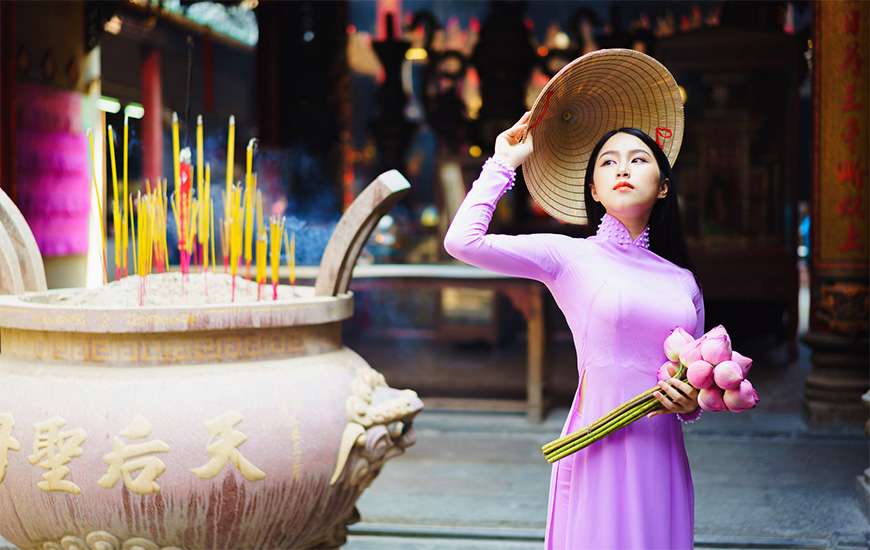
Conclusion on the importance of Vietnamese traditional dress
Vietnamese traditional dress serves as an enduring bridge connecting past cultural nuances with contemporary evolution. The thoughtful adherence to etiquette and guidelines for wearing these esteemed garments enriches their significance, offering popular expressions of identity, respect, and heritage. The ability to adapt and retain cultural roots amid modern influences underscores their lasting appeal, continually resonating with both locals and global admirers. Overall, these garments continue to highlight Vietnam’s diverse cultural narrative, harmoniously uniting individuals with shared values and historical lessons as they navigate an ever-evolving world.
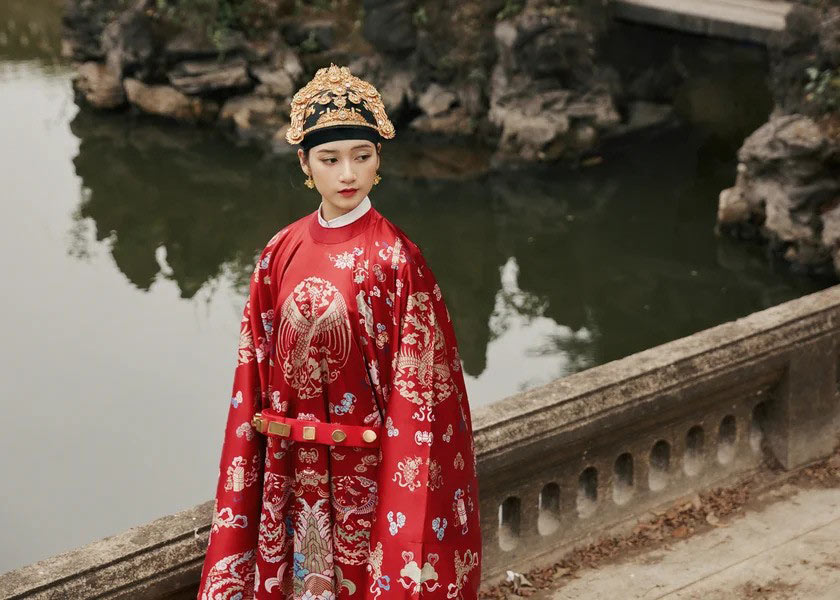
Enduring appeal of Vietnamese traditional garments
Vietnamese traditional garments hold an enduring appeal that speaks to their timeless elegance and deep cultural resonance. These garments intertwine tradition and modernity, enabling wearers to enhance personal identity through clothing while preserving cultural values and narratives.
The silhouette and design of traditional pieces, such as the Áo Dài, exude an elegance that transcends changing fashion trends. They embody Vietnamese aesthetics, emphasizing grace, femininity, and modesty cornerstones of national values and reflecting society’s embracing of modernity while staying firmly rooted in tradition.
Design innovations by contemporary designers meld tradition and fashion evolution, offering a versatile range of garments suitable for diverse contexts and generations. These adaptations ensure an ongoing appreciation of authentic cultural identity while inviting new interpretations within modern contexts.
The evolving narrative of traditional garments sustains their relevance and connection, weaving together history, culture, and individuality to create lasting representations of Vietnam’s heritage amid a dynamic global stage.
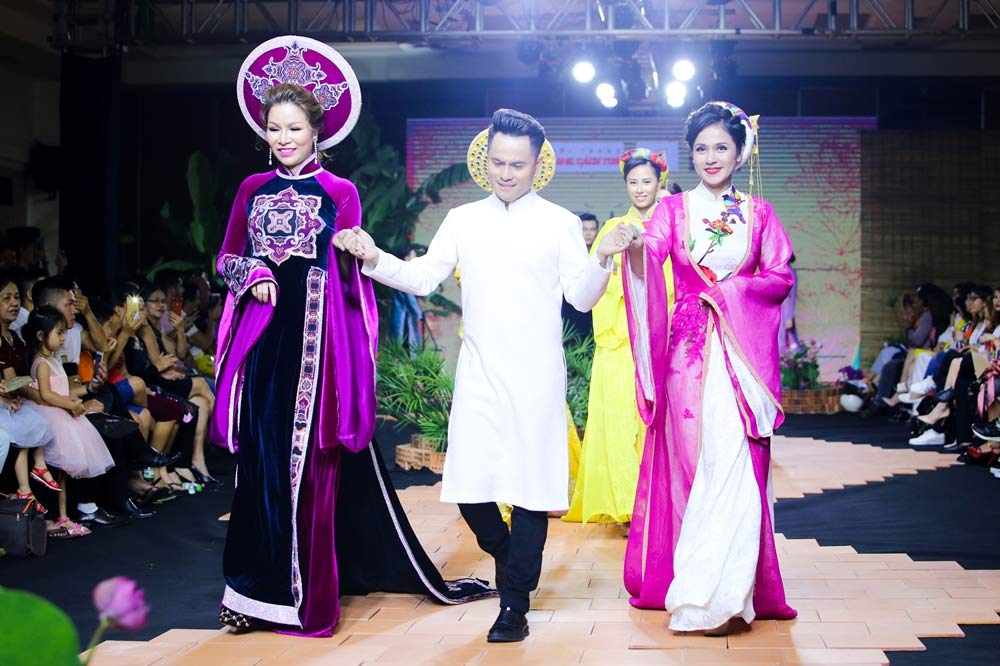
Future of traditional dress in contemporary Vietnam
The future of traditional dress remains promising as it continues to blend cultural heritage with modern influences. While honoring historical roots, these garments adapt to contemporary fashion trends, maintaining relevance and appeal among younger generations.
The Ao Dai, an iconic representation, epitomizes this dynamic shift, adapting timeless elements to meet modern needs. Experimentation with fabrics, cuts, and styles introduces diverse interpretations beyond ceremonial attire, ensuring versatility suitable for formal occasions, casual interactions, and daily pursuits.
Within educational spheres and professional settings, traditional attire roots cultural values and pride, serving as tangible expressions of national identity. The Ao Dai’s presence as a school uniform for female students or as traditional uniforms reinforces cultural continuity and national pride.
Globally, traditional Vietnamese dress resonates with cross-cultural appreciation, engaging international communities and promoting the country’s diverse aesthetics. This expanding visibility enhances appreciation for cultural heritage while fostering tourism and enriching the understanding of shared narratives.
As these garments intertwine with modern sensibilities, emerging styles showcase Vietnam’s historical depth and lasting legacy, solidifying its presence and vibrancy amidst global contexts of cultural exchange and evolution.
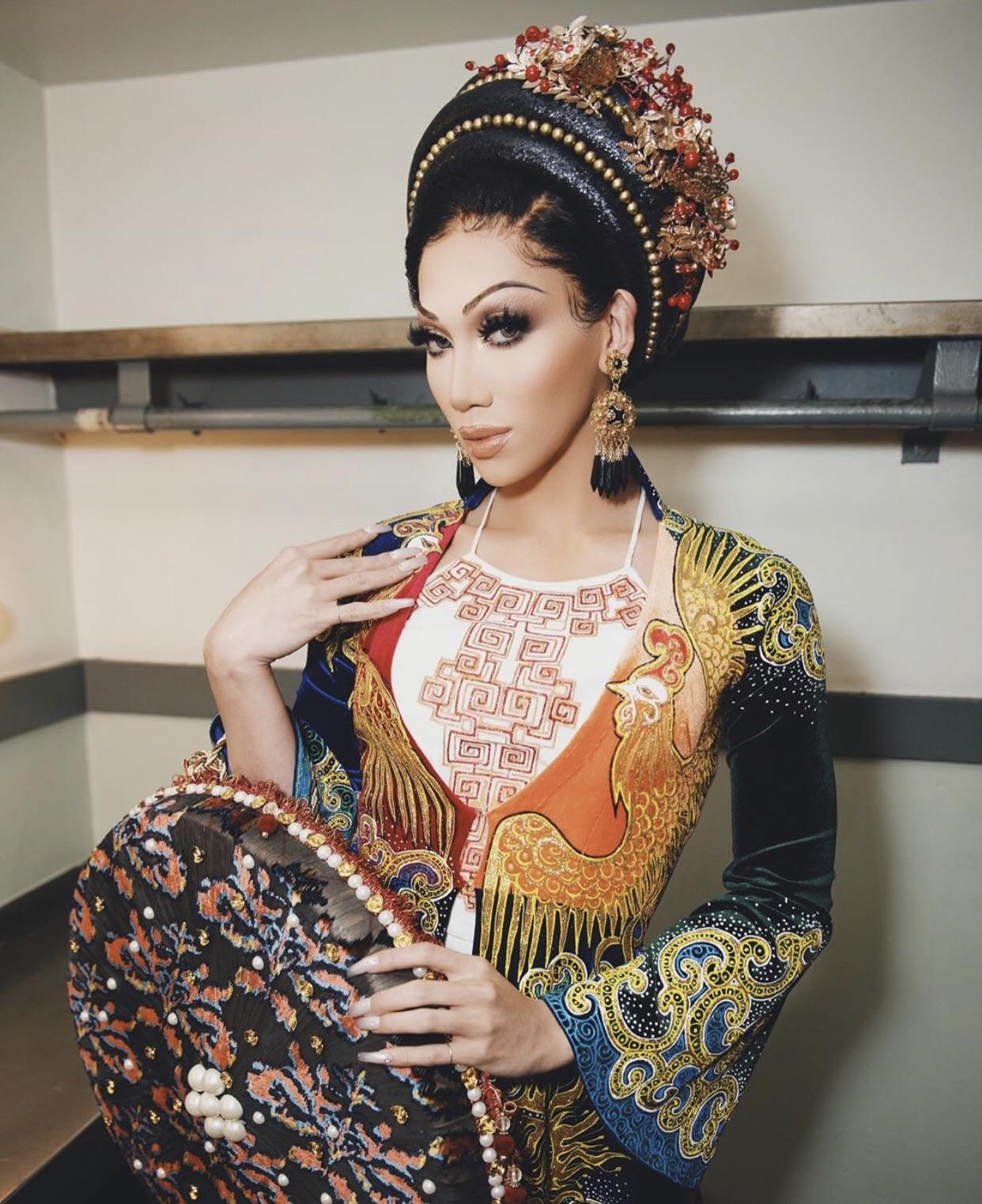
FAQs
Q1: What materials are commonly used in Vietnamese traditional clothing?
A1: Vietnamese traditional clothing often uses silk, brocade, cotton, and hemp, chosen for their comfort, elegance, and cultural symbolism.
Q2: How does modern fashion influence Vietnamese traditional attire?
A2: Modern fashion introduces new elements like cut, fabric, and design that blend with traditional aesthetics, creating diverse and versatile styles.
Q3: Why is the Ao Dai significant in Vietnamese culture?
A3: The Ao Dai embodies cultural pride, femininity, and elegance, serving as a visual representation of Vietnamese values and identity through history.
Q4: What occasions commonly feature Vietnamese traditional dress?
A4: Traditional dress is prominently worn during festivals, weddings, cultural celebrations, and educational or professional settings across Vietnam.
Q5: How do I choose the perfect Ao Dai?
A5: Consider body shape, fabric, color symbolism, occasion, and style preferences, ensuring a fit that balances tradition and personal expression.


